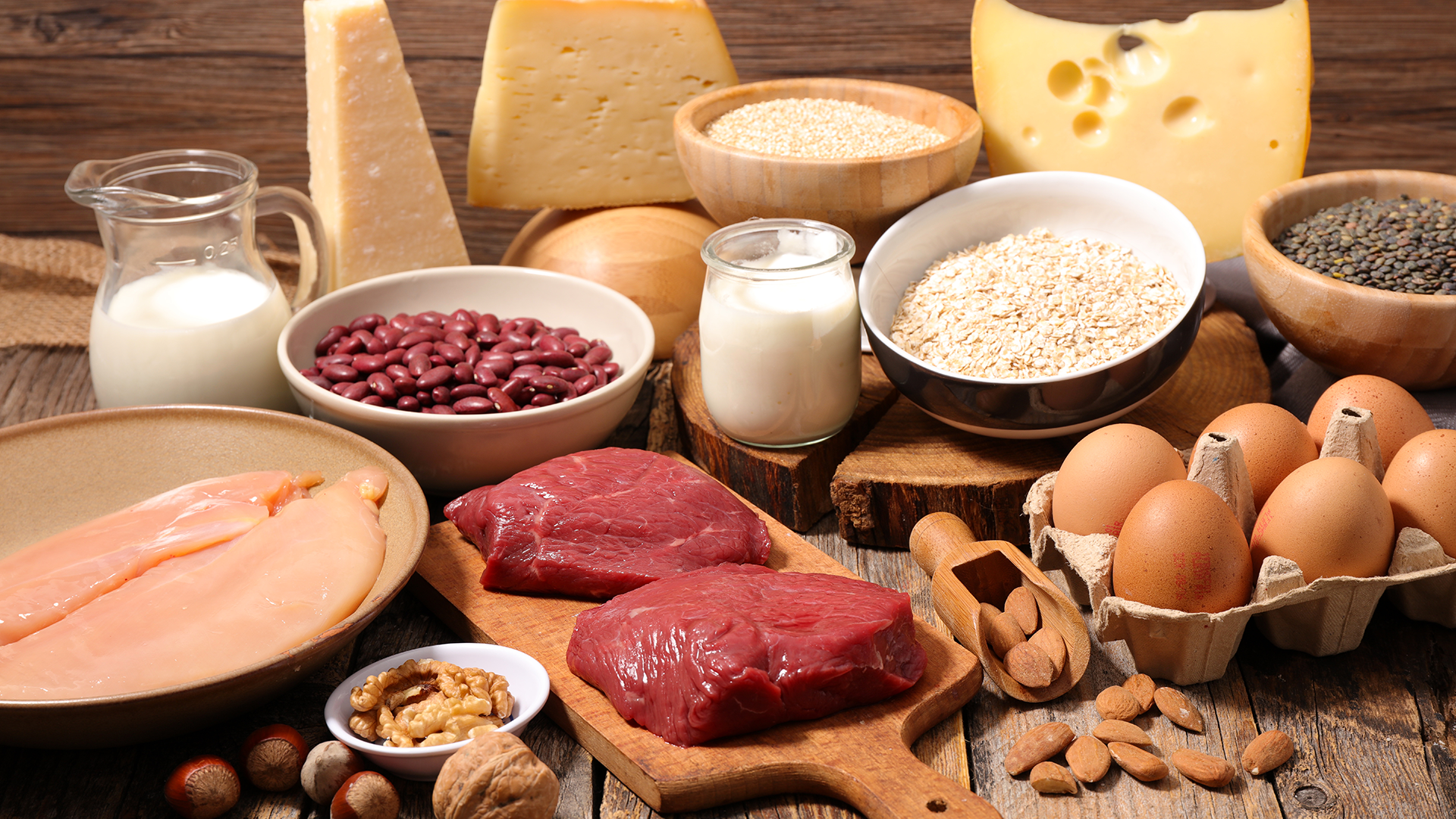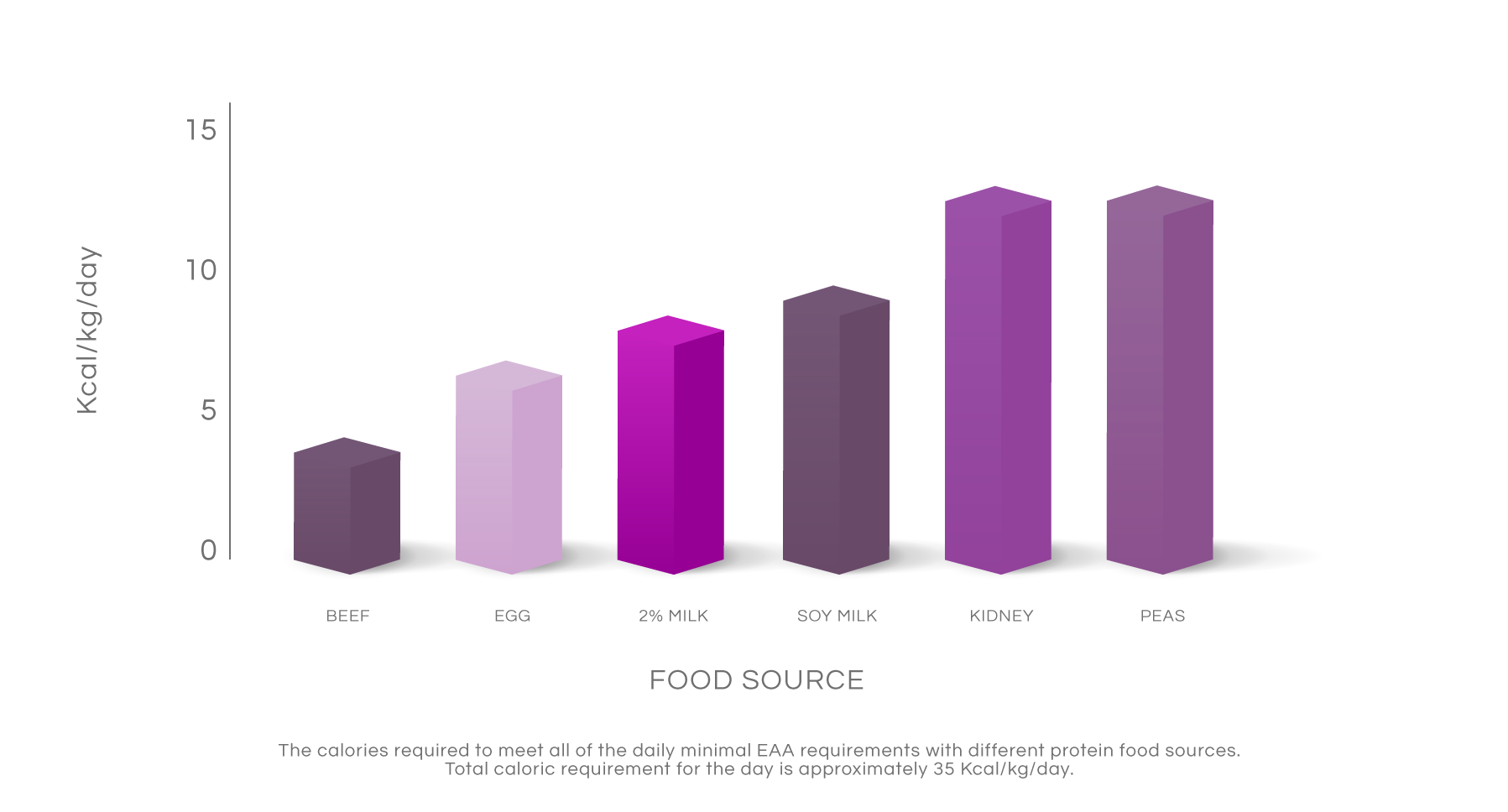What Types of Protein Should I Eat?
 By: by Amino Science
By: by Amino Science

Eating an ideal amount of high-quality protein is a cornerstone of optimal nutrition. For while we can survive our entire lives (after infancy) without carbohydrates and carry on for 6 months or more without any fats, our bodies don’t have the ability to store protein—which means this is one macronutrient we can’t live without. Unfortunately, not all proteins are created equal. So, in this article, we’re going to delve into the different types of protein and discuss how much protein, as well as which protein sources, you should be including in your diet to ensure you’re getting the protein intake your body needs to maintain overall health.
The Digestible Indispensable Amino Score
Using a score to rate the relative quality of proteins actually dates back to the early 1970s. The Food and Agriculture Organization of the United Nations (FAO) is the official body responsible for ranking the quality of dietary proteins. And what we’ve discovered over the decades is that essential amino acids (EAAs)—amino acids being the building blocks of protein—play a primary role in a healthy diet, protein nutrition, and overall well-being.
When ranking protein quality, scientists must first consider the amount of essential amino acids (EAAs) relative to the amount of nonessential amino acids (NEAAs). What’s more, it has become clear that the profile of EAAs—which is the amount of each EAA in relation to the others—is an integral part of defining what constitutes high protein quality.
The optimal profile is defined as closely paralleling the body’s requirements for the individual EAAs. Moreover, for the protein to be considered high quality, its constituent EAAs must be able to be easily and properly digested and absorbed by the body.
To derive a particular protein’s score, all its individual qualities are put into an equation to calculate the Digestible Indispensable Amino Score (DIAAS). The DIAAS is expressed as a percent of the requirement for the most limiting individual EAA—if you were to eat the estimated average requirement for dietary protein (0.66 grams of protein per kilogram per day) by ingesting only the test protein.
At this point, you may be wondering what we mean by “the most limiting individual EAA.” The limiting EAA is the one that’s in the shortest supply.
In order for a complete protein to be created, there must be a sufficient quantity of all 20 of the amino acids—essential and nonessential—used by the human body for the process of protein synthesis. However, if the body is missing even one amino acid, protein synthesis will stop and protein won’t be created.
Regarding the DIAAS, a score of 100, for example, means that if you were to eat 0.66 grams per kilogram per day of the test protein, you’d be consuming 100% of the EAA that had the lowest content in the protein relative to its requirement. And this means that you’d therefore be consuming more than 100% of the requirements for all the other EAAs.
Some representative DIAAS values are shown in the figure below. As you can see, the higher the protein quality, the higher the DIAAS.

The highest quality proteins come from animal sources and include meat, dairy products, fish, poultry, and eggs. Lower quality proteins include many of the plant-based proteins, such as those found in wheat, peanut butter, beans, and rice. These plant proteins are considered lower quality both because they don’t provide adequate amounts of all the EAAs and because they’re not as easily digested or absorbed.
However, some plant proteins, such as those found in soy products and quinoa, contain all the EAAs and are more easily digested and thus have higher scores.
Types of Protein Food Sources
There are a number of factors to consider when evaluating a protein food source. In addition to the protein quality, the non-protein components of the source also need to be taken into consideration.
Take a look again at the values in the figure above. Excluding protein supplements like whey protein and casein protein powder, notice how you’re probably not eating many “pure” proteins. Rather, you’re likely getting most of your proteins from whole food sources.
For instance, when you eat animal protein in the form of, let’s say, a steak, you are consuming a lot of high-quality protein, but about half the calories you’re eating are in the form of saturated fat. And if your source of protein is kidney beans, for example, you’re also eating carbohydrates and fiber. So these factors need to be taken into account when planning your diet.
As you might imagine, protein density is highest in a high-quality protein food source. What is protein density, you ask? This refers to the amount of protein per total grams of the respective food source.
The significance of protein density can be appreciated by looking at the number of calories that must be consumed from a protein food source to meet all daily EAA requirements. You can see some examples of what we’re talking about illustrated in the figure below.

In looking at this graphic, you may find some values surprising. For example, a hamburger is the poster child for obesity and cardiovascular disease in the United States, yet the number of calories you consume in the form of a beef patty to obtain your EAA requirements for the day is less than one-third the calories you need if you look to plant proteins to meet your EAA requirements.
Furthermore, the fiber in plant-based sources of protein, while providing some health benefits, also impedes the digestion of the EAAs in the protein component of the food, which in turn reduces the DIAAS.
Whether you look at the protein quality (DIAAS) or the protein density of different protein food sources, it’s evident that consumption of a variety of animal-based proteins simplifies the task of satisfying your daily EAA requirements.
Even so, it’s still possible to achieve adequate protein/EAA nutrition on a vegetarian or even vegan diet, but much more careful planning is necessary.
For vegetarians or vegans interested in maintaining muscle mass or achieving personal weight-loss goals, this planning is especially important because the type of protein consumed will likely come with a much higher proportion of calories when compared with total protein content. And this will leave you with less flexibility for the remainder of your diet.
However, dietary EAA supplements can play a crucial role in enabling you to achieve optimal EAA nutrition. In fact, the DIAAS for a well-balanced EAA formulation is over 300. This value reflects the complete absorption of free amino acids, the exclusion of NEAAs, and the ability to adapt the profile of the EAAs to match the body’s metabolic requirements.
In addition, protein density in a well-balanced EAA formulation is by definition complete, as there’s no non-protein component. Therefore, EAA supplements can be beneficial in all circumstances and can be particularly useful in diets that are otherwise low in EAAs, especially those that limit the consumption of animal-based proteins.


Up to 25% off Amino
Shop NowTAGS: food
Join the Community
Comments (0)
Most Craveable Recipes




 833-264-6620
833-264-6620



















